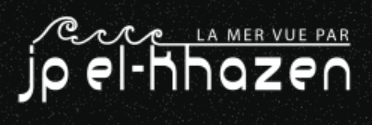By Paul Astih – Asharq Al-Awsat Beirut- The head of the Free Patriotic Movement, Foreign Minister Jebran Bassil, and Speaker Nabih Berri’s political advisor Finance Minister Ali Hassan Khalil have been exerting strong efforts for the past months to make a rapprochement between the two parties. Bassil and Khalil have been drafting an “understanding document” […]
by naharnet, Lebanon’s judiciary on Saturday banned a music video trending on social media of Lebanese artist Myriam Klink for violating the decency codes, the National News Agency reported. Media office of Justice Minister Salim Jreissati issued a statement banning the video, which features Klink and a performer Jad Khalifeh. He ordered the video’s withdrawal […]

by Gulfnews, Beirut: Brigadier General Joseph Aoun is expected to be appointed as
the new Commander of the Lebanese Armed Forces (LAF). He will succeed
General Jean Qahwaji. General Qahwaji was appointed military chief under the presidency of Michel Sulaiman in 2008. Aoun
(no relation to President Michel Aoun) was born in 1964 in Aychiye,
East of Sidon, a predominantly Maronite Village in South Lebanon. He
joined the military right out of college and reached his current rank
after he assumed command of the 9th Brigade, which served in South
Lebanon alongside United Nations Interim Force in Lebanon (Unifil) with
whose officers he is quite familiar with. Aoun has been slated to head the LAF since 2015, but Qahwaji’s term was extended twice.
In addition to this critical new appointment, the Cabinet is
apparently slated to designate Major General Emad Othman, who is
currently serving as a director general of the Internal Security Forces
(ISF), to become its Commander. He will be promoted to succeed Major General Ebrahim Basbous. Reliable
sources told Al Jumhuriyyah that Major-General Khalil Yahiya,
secretary-general of the Supreme Defence Council, will succeed
Major-General Mohammad Khayr, and that Major-General Tony Saliba will
replace Major General George Qara‘a as head of the State Security
Service.
Major-General Khalid Hammoud is slated to become head of
the ISF’s Intelligence Branch and Major-General Samir Sinan as deputy to
the State Security Service. Parallel to these appointments, Major
General Abbas Ebrahim, the director general of public security will
resign from the military, allowing him to stay in office until the
retirement age for civilians, which is 64 years old.

by Naharnet Newsdesk
The Judicial Council, Lebanon’s highest court for state
security crimes, on Friday held its second in absentia trial session in
the case of the 1982 assassination of president-elect Bashir Gemayel. After having issued an ultimatum asking the accused
Habib Chartouni to turn himself in within 24 hours at the latest from
Friday’s session, the court decided to consider Chartouni a fugitive and
to try him in absentia. It also decided to launch in absentia proceedings
against the other suspect in the case, Nabil al-Alam, seeing as no death
certificate has been issued for him by the Directorate General of
Personal Status.
Media reports had said that al-Alam had died of illness in 2014. According to al-Jadeed TV, the Judicial Council has
given al-Alam an ultimatum to turn himself in within 24 hours at the
latest from the next session, which will be held on April 28. State-run National News Agency, said the court also
decided to strip Chartouni of all his civil rights and to seize any
assets he has in Lebanon. Protesters from a Syrian Social National Party faction
calling itself the July 8 Movement meanwhile staged a protest near the
Justice Palace in support of Chartouni.
Demonstrators carried banners and pictures and called on the Lebanese state to consider Chartouni “a hero not a criminal.” Security forces took measures to prevent the demo from
approaching the Justice Palace before eventually asking the protesters
to leave the area. Gemayel was a senior member of the Kataeb Party and the
supreme commander of the Lebanese Forces militia during the early years
of the civil war.
Over the past three years, since the Banque du Liban (BDL) introduced Circular 331 to inject $600 million dollars in the Lebanese entrepreneurship ecosystem, Beirut has begun to emerge as a regional tech powerhouse – with greater access to funding, government support and a growing number of accelerators and incubators. A database compiled by Arabnet, […]

The Daily Star, BEIRUT:
Local activists renewed their campaign against mobile network providers
on Thursday, accusing them of ripping customers off. “Telecoms
companies are pioneers when it comes to the continued theft of people’s
money,” said a Civil Movement Observatory statement carried by the
National News Agency. The statement accused Lebanon’s two mobile
service providers Touch and Alfa of “infringing on people’s natural
right of access to real (reliable) communication [networks] with a
suitable price.” A September 2015 Byblos Bank report said that
Lebanon’s prepaid mobile phone users are charged the highest fees in the
Arab world.
In January, activists urged people not to use their phones during several one-day boycotts against telecoms companies. Following
the Jan. 8 boycott that saw wide participation, Lebanese Telecoms
Minister Jamal Jarrah promised to reduce the price of mobile calls and
data. Prepaid phone and data bundles expire in 30 days, forcing
customers to recharge their lines even if they have not completely
consumed their credit. In their statement, activists accused Jarrah of rebuffing demands he had promised to fulfill “He
is making an excuse about not being able to lay further burdens upon
the state treasury as the [public sector] salary scale is expected to be
endorsed,” the statement said.

by Abby Jackson
Harvey Mudd College, a tiny liberal-arts school in Claremont,
California, is an engineering, science, and mathematics
powerhouse. In fact,
its graduates outearn those from Harvard and Stanford about 10
years into their careers. But in addition to its reputation for producing strong graduates
in the STEM fields (science, technology, engineering, and math),
HMC also produces students — sometimes known as Mudders — who
embrace the arts. The school, which enrolls about 800 students, not only encourages
but demands that Mudders graduate with a strong liberal-arts
background, taking just as
many courses in the humanities as they must in core
introductory courses in the sciences.
HMC
describes its core curriculum as “an academic boot camp in
the STEM disciplines — math, physics, chemistry, biology,
computer science, and engineering — as well as classes in writing
and critical inquiry” that it says “gives students a broad
scientific foundation and the skills to think and to solve
problems across disciplines.” The approach closely mirrors advice from some experts on how
schools can develop students able to compete with automation,
which has become an increasingly disruptive force in the labor
market.
Self-driving cars, for example, threaten the job security of
millions of American truck drivers, and automated financial
advisers
are replacing humans at wealth-management firms. “Absolutely I think there’s value in some level of understanding
computer science,” Shon Burton, the
CEO of
HiringSolved, previously
told Business Insider. HMC
describes its core curriculum as an academic boot
camp.
Harvey
Mudd College/Facebook Burton, whose company uses artificial intelligence to make job
recruiting more efficient, said students must embrace the
humanities to become critical thinkers who improvise in ways that
robots cannot. At HMC, the computer-science program is so strong that elite
STEM-focused schools have taken note.

by YaLibnan.com
Free Patriotic Movement criticized the Lebanese Forces over its
latest proposal for privatizing the electricity sector during the
cabinet meeting that was supposed to discuss the budget at the Grand
Serail. Ever since Lebanese Forces leader Samir Geagea endorsed FPM founder
Michel Aoun’s presidential candidacy the relations between the 2 parties
ran very smoothly
But on Wednesday Energy Minister Cesar Abi Khalil who represents president Aoun in the cabinet criticized LF for its proposal. Geagea has recently proposed that private companies should build and operate power plants
in a partnership with the state in the electricity sector, describing
it as a necessary reform that should be included in the state budget. Education Minister Marwan
Hamadeh of the Progressive Socialist Party voiced support for the LF’s
proposal in this regard, but Justice Minister Salim Jreissati who
also represents Aoun in the cabinet rejected linking the state budget to the electricity plan stressing they are “two separate things.” Abi Khalil meanwhile told reporters sarcastically that he is
“preparing a health plan,” in an apparent jab at the LF, which holds the
health portfolio in the government. Flanked by Abi Khalil after the session, Health Minister Ghassan
Hasbani tried to play down the differences with FPM by saying : “We’re
both in good health and we always cooperate.”

by RT.com – During a trip to Beirut, US Central Command leader, General Joseph
Votel, told top Lebanese officials that declaring safe zones in Syria
would work once ground troops and other resources are in place.
President Donald Trump has long promised such a policy. On Monday, four-star General Votel met with Lebanese President Michel
Aoun, Prime Minister Saad Hariri and Defense Minister Yaacoub Sarraf to
discuss military strategy against the Islamic State (IS, formerly
ISIS/ISIL) and other jihadist forces in Syria. Syrian safe zones would be “a viable concept” in “areas that have already been secured where we already have humanitarian and stabilization activities ongoing,” Votel said, according to Foreign Policy.
However, “You’ve got to have all of the resources,”
Votel added. That would include ground troops, but the general
reportedly did not go into specifics about which country or countries
would provide the boots on the ground. Turkey is skeptical of a
safe zone in Syria, where Kurdish forces may hold an influential
position. Turkish President Recep Erdogan threatened that its Free
Syrian Army allies could attack the Kurds, an incident Votel said could “have an impact on the coalition campaign plan,” Foreign Policy reported. “We are fully engaged with our Turkish partners,” Votel added, referring to northern Syria, where Kurdish forces have advanced.
by DailyStar.com.lb Lebanon’s Industry Minister Hussein Hajj Hasan Tuesday warned of a total collapse of the industrial and trading sectors in Lebanon. Hajj Hasan, who was speaking at a conference for marble and granite factory owners at the Biel Exhibition Center in Beirut, said that “competition by foreign products … has created a dangerous situation.” […]



